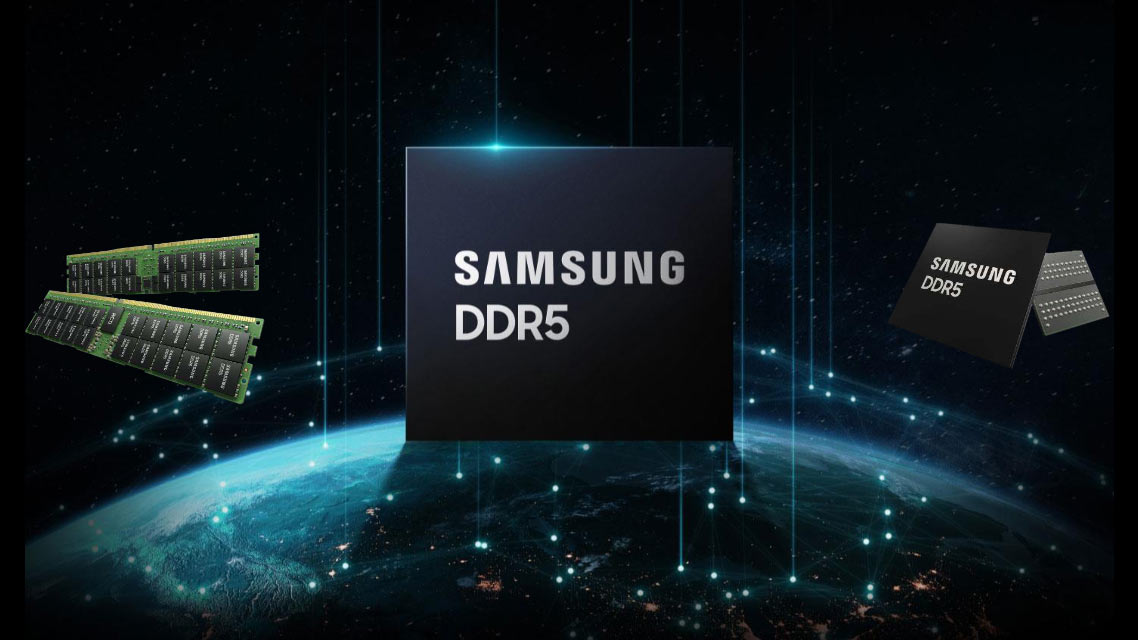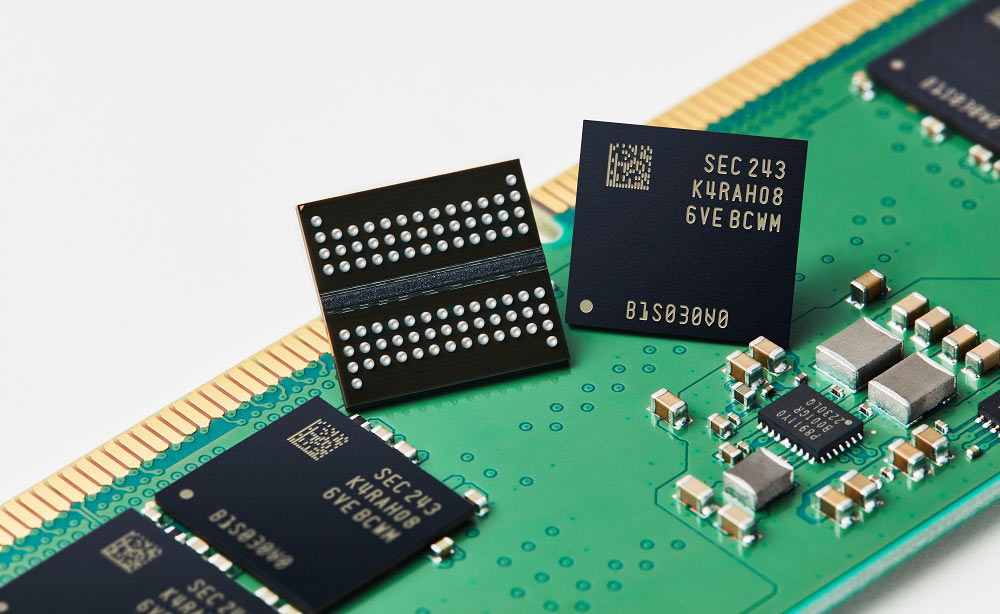
Samsung says it has reaffirmed its DRAM leadership by kicking off mass production of 16-gigabit (Gb) DDR5 DRAM at 12nm. The South Korean electronics giant asserts that the memory ICs resulting from this new process reduce power consumption by about a quarter vs. the previous generation and will enhance wafer productivity by as much as a fifth. Moreover, these leading-edge memory chips will boast a maximum pin speed of 7.2 Gbps.
Discussing the manufacturing milestone, Jooyoung Lee, Executive Vice President of DRAM Products & Technology at Samsung Electronics, said that "Using differentiated process technology, Samsung’s industry-leading 12nm-class DDR5 DRAM delivers outstanding performance and power efficiency." However, PC users will have to wait for the trickle-down, as the first use of these 12nm DDR5 ICs will be in applications like data centers, artificial intelligence, and next-generation computing.

Samsung says that the development of 12nm-class DRAM was enabled by "the use of a new high-K material." In further detail, it explains that the transistor gate material used in these ICs has a higher capacitance, making its state easier to accurately distinguish. Furthermore, Samsung's efforts to lower operating voltage and reduce noise have also helped deliver this optimized solution.
These are still 16 Gb ICs, so Samsung hasn't traveled further along its density roadmap with these DRAM chips. Instead, the heralded benefits concern power efficiency, speeds, and wafer economy. If you want some numbers, Samsung specified that the 12nm DDR5 ICs reduce power consumption by 23% compared to the previous gen, and enhance wafer productivity by up to 20%.
Will This Mean Faster DDR5 Modules?
We already mentioned the new DRAM ICs offer a pin speed of 7.2 Gbps. Samsung says that, in theory, this means that a DRAM-to-DRAM transfer of two 30GB UHD movies could take place in about a second. However, it neglects to highlight that this is the same pin speed as that touted for the previous gen 14nm DRAM ICs. This doesn't rule out the potential of the newer DDR5 DRAM to perhaps overclock better; for this information, we will have to wait and see.
Samsung says it has already confirmed the new (12nm) 16Gb DDR5 ICs have been through compatibility testing for use with AMD systems. It is also working closely with other unnamed companies.







